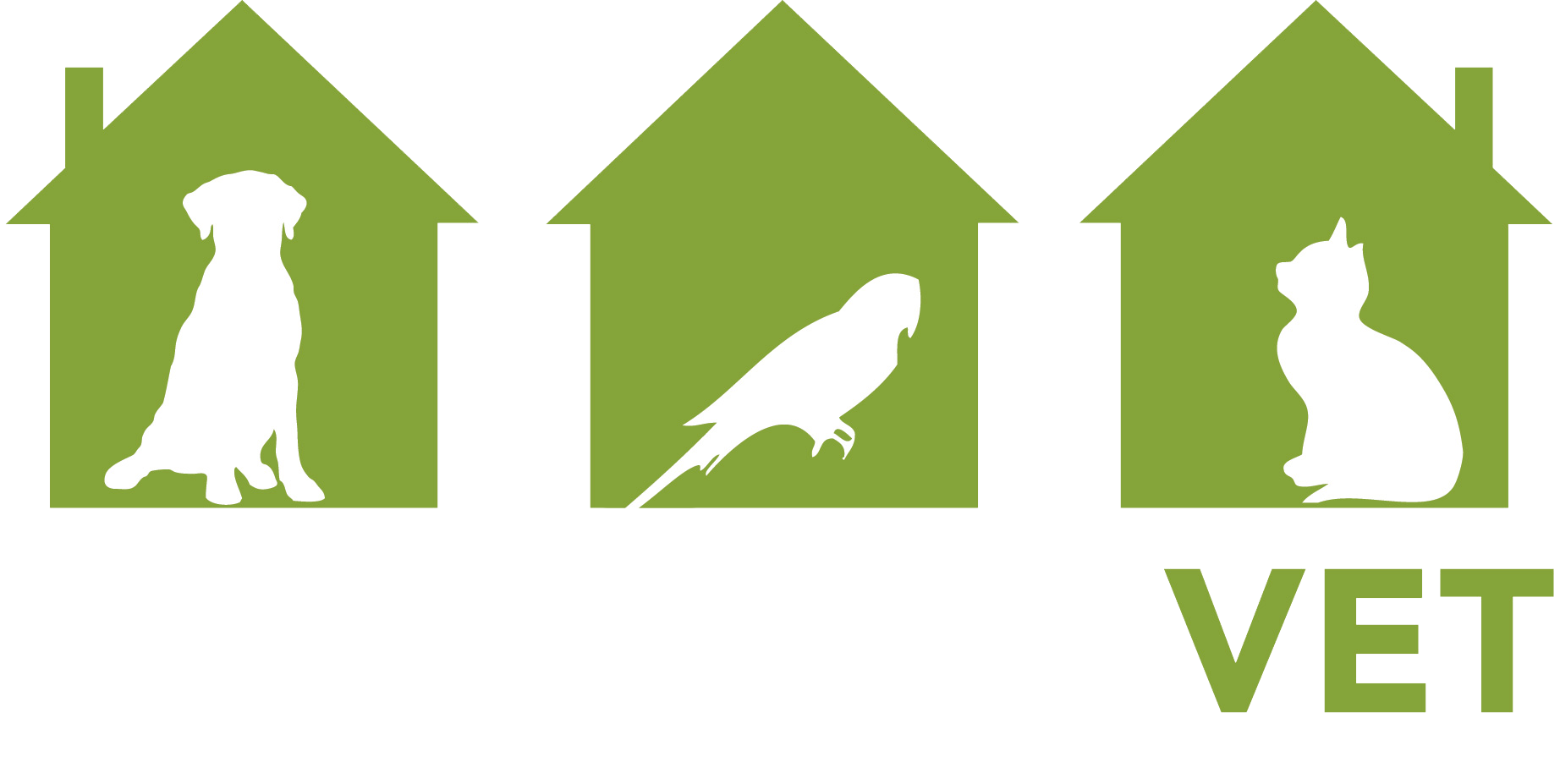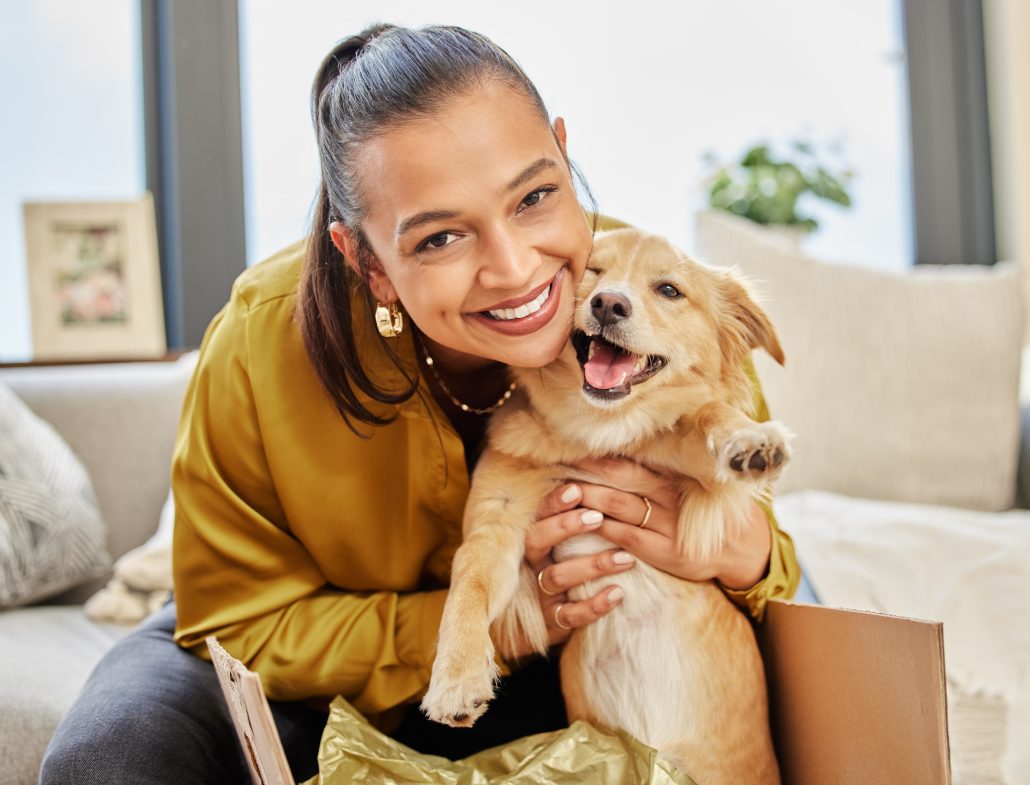
Whether it’s a playful kitten or a curious pup, pet pregnancy can be both exciting and a bit overwhelming. Just like humans, animals go through a variety of changes during pregnancy, and spotting the signs early can help ensure both your pet and her future babies stay healthy and happy.
In this post, we’ll walk you through everything you need to know about pet pregnancy—from recognising the early signs to preparing for the big day, and the important steps you need to take to ensure both mom and babies are healthy. We’ll also cover how to support your pet throughout her pregnancy and what steps to take if any complications arise.
Pregnancy In Dogs
Most dogs reach sexual maturity around six months old – that’s young! Smaller breeds often come into heat a bit earlier, while giant breeds might not experience their first cycle until they’re about 18 months to 2 years old.
Dogs typically go into heat twice a year, roughly every six months, though this can vary depending on the breed and size of your furry friend. This is the window when a dog can become pregnant.
The length of a dog’s pregnancy, or gestation period, is usually around 62 to 64 days, which is about two months. However, this can vary slightly based on the breed and the size of the litter. By the end of the first month of pregnancy, a vet can often detect a heartbeat, and the puppies development accelerates as the embryos grow into recognisable puppies in the second month!
Signs Your Pup May Be Pregnant
Think your pooch might be expecting? It’s always exciting to speculate, but remember, some of these signs can also point to health issues, so any significant changes in your dog’s behavior or physical condition should be checked by a vet.
Here are some common signs that your dog might be pregnant:
- Tires More Easily: Does your usually bouncy pup seem more tired and spend extra time napping? If she’s normally full of energy but now prefers snoozing, it could be a sign of pregnancy. For dogs that already enjoy their naps, this might be more difficult to catch.
- Increase in Appetite: During pregnancy, your dog’s appetite may fluctuate. Early on, she might eat less or experience occasional vomiting. Midway through her pregnancy, however, she could become hungrier and seem dissatisfied with her meals. These changes are linked to the shifting hormones in her body.
- Weight Gain and a Swollen Belly: As the puppies grow, your dog’s abdomen will start to expand. This weight gain, coupled with a visibly swollen belly, can be one of the clearest indicators of pregnancy.
- Increase in Nipple Size: Another noticeable change is in your dog’s nipples. Normally small, her nipples will become larger as her body prepares for nursing. In the later stages of pregnancy, you might even see a small amount of milk leakage.
- Nesting Behaviours: As your dog nears the end of her pregnancy, she may start showing nesting behaviors. You might find her rearranging her bedding or shredding blankets as she prepares a comfortable spot for her new babies.
- More Affectionate: You might find that your dog becomes unusually affectionate, seeking out more cuddles and attention.
- Irritability: How can they be irritable, if they are more affectionate? Mixed signals, right? If she’s occasionally grumpy or irritable, it’s likely due to the hormonal changes and physical discomfort she’s experiencing.
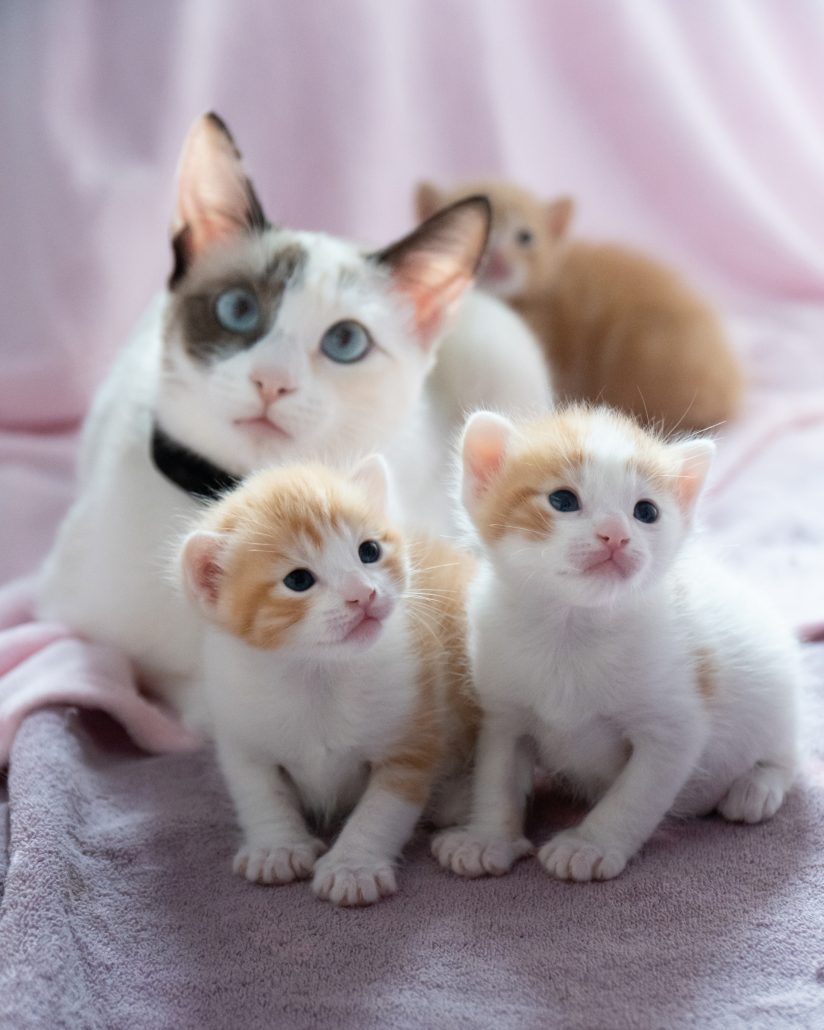
Pregnancy In Cats
A cat can fall pregnant as young as four months old. That’s right—your little kitten might be ready to become a mother sooner than you’d think. But, it doesn’t end there. Cats can continue to get pregnant throughout most of their lives, as long as they’re in heat and not spayed. Once your cat is expecting, her pregnancy typically lasts about 63 to 66 days, which is just over two months.
Signs Your Cat May Be Pregnant
Early on, it might be tricky to spot the signs, but as her pregnancy progresses, you might notice some changes. The most common signs include:
- Increased Appetite: One of the first signs of pregnancy in a cat is a noticeable increase in appetite. If your usually finicky eater suddenly seems to have an insatiable hunger, it could be due to her growing kittens needing extra nutrients.
- Weight Gain and Swollen Belly: As the pregnancy progresses, your queen’s (what a pregnant cat is called) belly will start to expand. This weight gain and a noticeably rounder belly are clear signs that she’s expecting. By about five weeks into her pregnancy, you should be able to see a significant difference.
- Change in Nipple Size and Colour: Early in her pregnancy, your cat’s nipples will become larger and pinker. This change is due to the increased blood flow and the preparation of her body to nurse her kittens. As the pregnancy continues, you might also notice her nipples leaking milk.
- Nesting Behaviour: As your cat nears the end of her pregnancy, she’ll start showing nesting behaviours. This means she might begin to seek out quiet, secluded spots to create a cozy, safe place for giving birth. You might see her arranging bedding or collecting soft materials as well.
- Less Active or More Restful: Pregnant cats may also experience periods of increased tiredness. If your queen seems to be sleeping more and playing less, it could be a sign that she’s preparing for the arrival of her kittens.
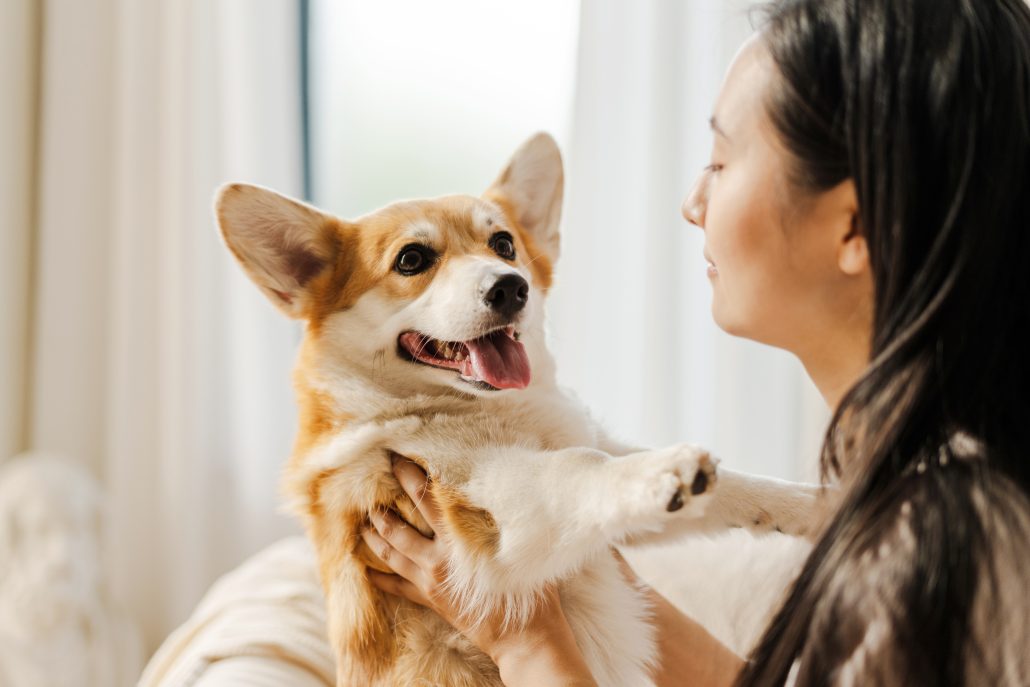
How A Vet Tells Your Pet Is Pregnant
Unfortunately, it’s not as easy as a store-bought pregnancy test! The most accurate way to tell if your pet is pregnant is to take her to the vet.
- Palpation: This involves gently feeling your pet’s abdomen find any babies. While this method can be useful, it’s generally more effective in the later stages of pregnancy when the babies are more developed.
- Ultrasound: An ultrasound can detect pregnancy relatively early after conception. It’s a non-invasive way to see the developing embryos.
- Hormone Test: Hormone tests are another reliable way to confirm pregnancy. Specific hormones are produced by the placenta and increases significantly during pregnancy. This test can be done early in the pregnancy and provides a clear indication of whether your dog is expecting.
- X-ray: X-rays are typically used later in the pregnancy, around the 45-day mark. By this time, the babies’ skeletons have developed enough to be visible on an X-ray. This method not only confirms pregnancy but also helps determine the number of babies and their positioning, which can be useful for planning the delivery.
- More Affectionate or Needy Behavior: You might find that your queen becomes more affectionate than usual. She may seek out extra cuddles or follow you around more, looking for comfort.
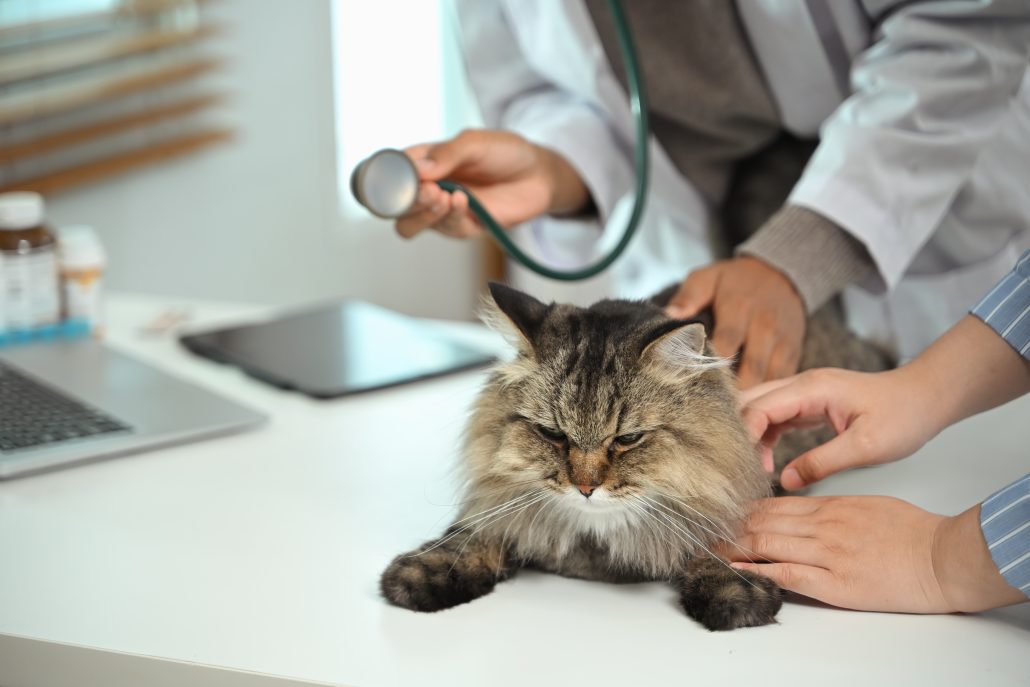
Caring For Your Pregnant Pet
Caring for a pregnant pet involves a mix of attentive care and preparation to ensure both mom and her future babies are healthy and happy. Here’s how you can provide the best support for your expectant furry friend:
Nutrition
Proper nutrition is crucial for a healthy pregnancy. If your pet is already on a good quality food and maintains a healthy weight, you likely won’t need to adjust her diet throughout most of her pregnancy.
However, as she approaches the final weeks, her nutritional needs will increase. Gradually increase her food intake and switch to smaller, more frequent meals to prevent discomfort. If you’re unsure about dietary changes, always consult your veterinarian for personalised advice.
Hydration
Keeping your pet hydrated is essential, especially during pregnancy. Ensure she has constant access to fresh water. If you notice she’s drinking less than usual, try adding a bit of water to her dry food to encourage her to drink more. Proper hydration supports both her health and the development of her babies.
Exercise
While exercise is important, it should be gentle. For dogs, short, frequent walks are ideal, avoiding overly strenuous activities. For cats, a bit of light play and gentle activity can keep her fit without overexerting her. Adjust her exercise routine based on her comfort and energy levels.
Vet Visits
Regular veterinary care is also essential vital their pregnancy and beyond. Keep up with vet appointments to monitor her health and address any concerns as early as possible. Your veterinarian will also provide guidance on preparing for the kittens’ arrival and ensure that both mom and babies are in good health.
Create A Nesting Space
As her due date approaches, your pet will start looking for a quiet, secure place to give birth. Set up a cozy, private nesting area well in advance. Use old blankets or towels, as the birth process can be messy. Keep her in a designated, secure room to prevent her from wandering off in search of a secluded spot.
Read More: Keeping Your Cat Hydrated & The Importance of Feline Hydration
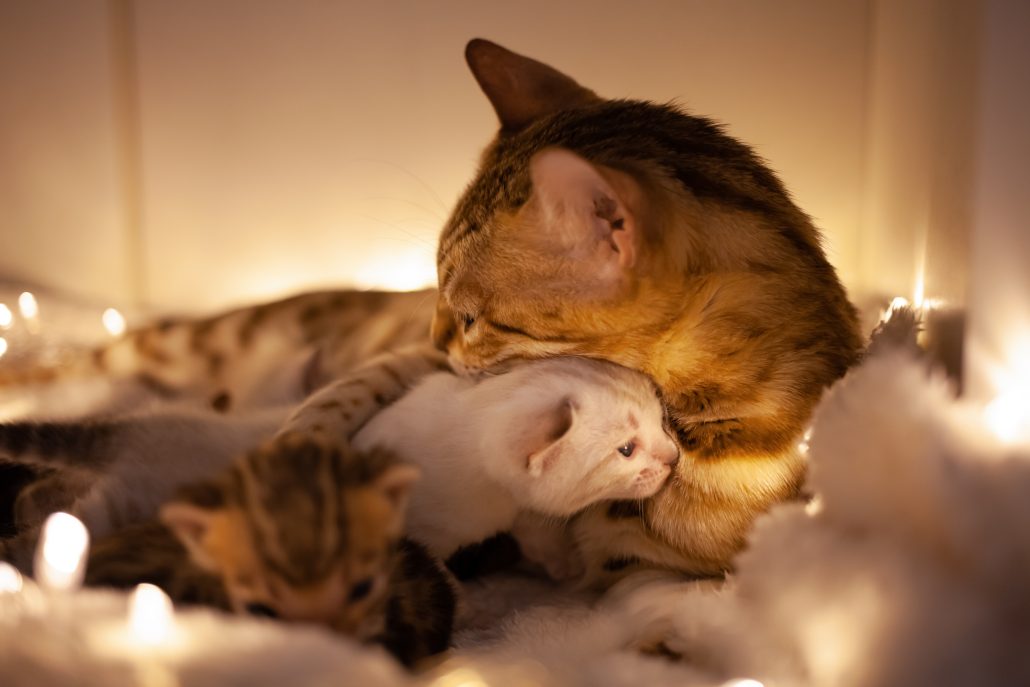
Preparing For Babies
As your pet’s due date approaches, it’s time to get ready for the arrival of her babies. Whether you’re expecting puppies or kittens, knowing what to look out for and how to assist can make the process smoother for both your pet and her little ones.
Dogs & Puppies
When a dog is about to give birth, she may start to show some distinct signs of labour. Keep an eye out for heavy panting, a noticeable decrease in appetite, and increased restlessness. These are often early indicators that the big moment is near!
As labour approaches, abdominal contractions will begin. These contractions may start slowly and increase in strength and frequency. During this time, you might hear some straining or moaning from your dog.
When each puppy is born, it will be enclosed in its placental membrane. The mother will instinctively lick the puppy to remove the membrane and stimulate breathing. If she doesn’t, you’ll need to step in. Carefully remove the membrane and rub the puppy with a clean towel to encourage it to cry and start breathing.
Cats & Kittens
As your cat approaches labor, she may be more restless – going in and out of her nesting area. You might notice that your cat begins to pant as she starts her labour. She may also lose her appetite as she nears the end of her pregnancy. This is perfectly normal and part of her body’s preparation for birthing.
During labour, your cat will likely lick her vulva frequently to keep herself clean. This behaviour is a natural part of the process and helps ensure a clean environment for the kittens.
Caring For Your New Babies
Welcoming a litter of newborn puppies or kittens into your home is an exciting time, but it’s important to remember that, as tempting as it is to cuddle and hold these adorable furballs, you should give the mother and her babies some space. Newborns are incredibly delicate and susceptible to illness, so the less you intervene, the better—especially in the early days.
- Respect the Mother’s Space: While it’s natural to want to check on the babies frequently, try to keep handling to a minimum. The mother knows best how to care for her little ones, and too much interference can cause unnecessary stress. Make sure the nesting area is warm, quiet, and free from disturbances.
- Monitor Their Growth: Keep an eye on the litter to ensure each baby is growing at a healthy rate. If you notice any runts, or babies that seem smaller, weaker, or less energetic, it’s important to monitor them closely. Sometimes, these little ones need extra care to ensure they’re getting enough nutrition. If you’re concerned about their growth or health, consult with your veterinarian for guidance.
- Watch for Warning Signs: Pay attention to any signs that something might be wrong, such as babies not nursing, the mother rejecting one of her young, or any unusual behaviour. It’s always better to be cautious and check with your vet if you notice anything concerning. Early intervention can make a significant difference in the health and survival of these tiny new lives.
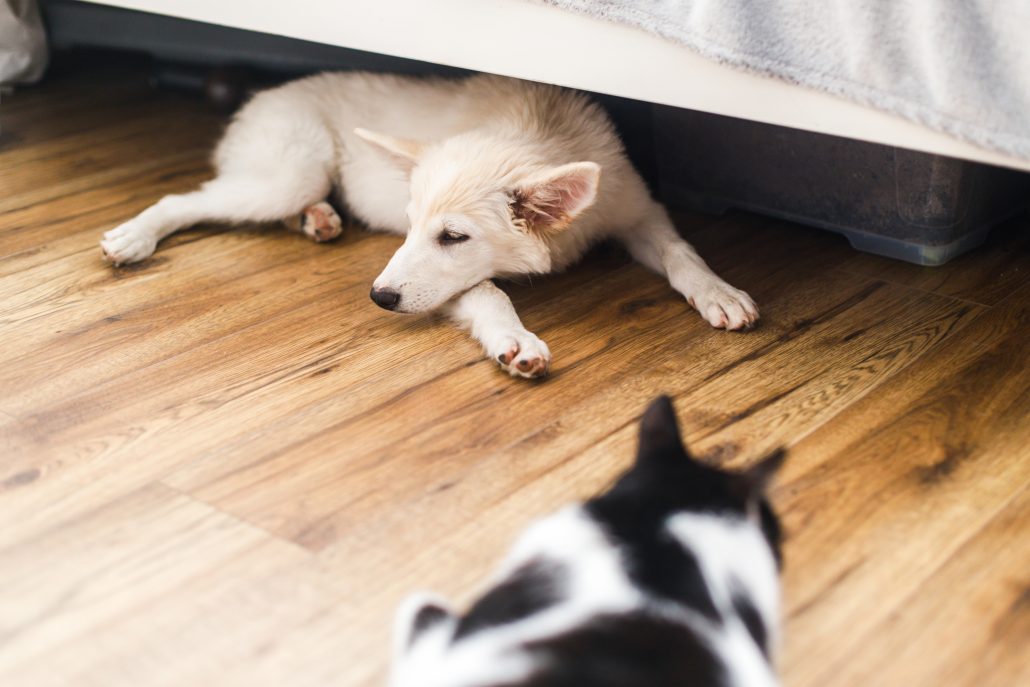
The Importance Of Desexing
While the idea of your pet having a litter might seem adorable, there are many reasons why desexing is a responsible and beneficial choice for both pets and their owners. It’s one of the most important decisions you can make for your pet’s health and well-being.
- Preventing unwanted litters
- Reduces the risk of uterine infections
- Helps decrease the number of stray or abandoned animals
It’s generally recommended to desex pets at a young age, but the exact timing can vary depending on the breed, size, and health of your pet. Your veterinarian can help you determine the best time for your pet’s procedure, ensuring it’s done safely and at the optimal stage of development.
Is Your Pet Expecting?
Navigating pet pregnancy can be an exciting yet challenging experience, especially if it’s your first time. Understanding the signs of pregnancy, knowing how to care for your pet during this special time, and preparing for the arrival of new babies are all crucial steps in ensuring the health and happiness of both mom and her little ones.
If you think your pet might be pregnant or need advice on caring for your pregnant pet, our veterinary team is here to help. From confirming pregnancies with diagnostic tests to providing nutritional and health guidance, The House Call Vet are here to support you every step of the way. Book an appointment with us today, and let’s work together to ensure a safe and healthy journey for your pet and her future babies.

